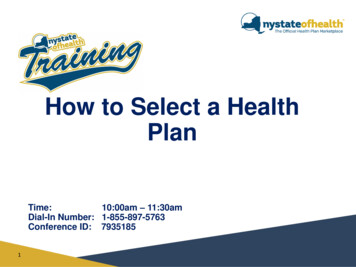
Transcription
How to Select a HealthPlanTime:10:00am – 11:30amDial-In Number: 1-855-897-5763Conference ID: 79351851
Today’s Webinar– Dial in to listen to the audio portion of the webinarusing the audio instructions on your Webex controlpanel.– All participants will remain muted for the duration ofthe program.– Questions can be submitted using the Q&A functionon your Webex control panel; we will pauseperiodically to take questions.– A recording of the webinar and any related materialswill be available online and emailed to all registrants.2
Understanding the UninsuredHere’s what you said: More than 96% said it “increased my knowledge of the topic(s). More than 96% said “the information will allow me to better assistconsumers who are uninsured.“Keep up the good work.”“I mostly enjoyed the real life scenarios. This makes the information much moretangible.”“I really wish there were statistics on the uninsured by New York counties. I imaginethe uninsured populations look different in the Bronx vs. Albany.”“Still need the presenters to read the slide number each and every time they move tothe next slide.”3
Presenters WelcomeDonna Frescatore, NY State of Health Today’s PanelistLynn Quincy, Consumers Union4
PresenterLynn QuincyAssociate DirectorHealth Reform PolicyConsumers Union5nystateofhealth.ny.gov
Picking the Best Health Plan What Consumers Need toKnowLynn QuincyAssociate Director, Health PolicySept 16, 20156
Yes, THAT Consumer Reports7
Learning Objectives The value of in-person assistance forplan selection Helping consumers compare QHPs: CostBenefitsProvider NetworksFormulariesQuality Ratings Become familiar with plan selection tools8
In-Person Enrollment Assistanceis Critical and Preferred9
Consumers Hate HealthInsurance ShoppingThat makesyour jobvery difficult!10
What is Health Insurance Literacy?Health insurance literacy measures thedegree to which individuals have theknowledge, ability, and confidence to findand evaluate information about healthplans, select the best plan for theirfinancial and health circumstances, anduse the plan once enrolled.Source: Measuring Health Insurance Literacy: A Call to Action,Consumers Union and partners, February 201211
Most Consumers Have LowHealth Insurance LiteracyThat means: less likely to enroll in coverage less likely to pick the best plan forthem not confident in their selection not sure how to use coverage onceenrolled12
In-Person Assistance provides consumers with Knowledge of how to select a plan Confidence in their choice Help with using coverage once enrolled.13
Helping Consumers CompareHealth Plans14
Don’t Forget Navigators, CACs, and In-PersonAssisters may not favor one plan overanother, but should help a consumercompare plans to find the right plan forthem.15
“Best” is in theeye of the beholderShoppers should take into account: Ability to afford premiums and costsharing Health status Existing relationships with doctors Transportation/language considerations if nocurrent doctor Drugs currently being taken16
Comparing QHPs CostBenefitsNetworksFormulariesQuality Ratings17
Underlying Cost of Care andWhy We Need Health Insurance Some consumers lack a basicunderstanding of why we need healthinsurance: it protects them fromlarge medical bills. Many consumers have little idea ofwhat medical care costs when youhave to pay the whole thing out-ofpocket.18
Cost of Care Without Insurance3-day hospital stayWithout insurance: 30,000Broken leg12-month prescriptionWithout insurance: 7,500Without insurance: 500Source: h-coverage/19
With Insurance.You pay a fixed premium each month BUT the cost of most medical care is shared between you and theinsurance company. And many preventive care services are free.If you get an really expensive illness, insurance will pay themajority of those bills. The most you have to pay in a year iscapped.And even when you pay your share, you benefit from lowerpayment rates with doctors negotiated by the insurer.20
Buying Coverage Involves TwoKinds of CostsPremiumsOut of Pocket CostsWhen You See theDoctor:(Pay these every monthwhether or not you cket maximumBenefit limitsThere’s typically a trade-off between premium costs andOut-of-Pocket costs (also known as cost-sharing).21
Metal Tiers provide an overall indicationof patient cost sharing in-networkPremiumsOut-of-PocketCostsPlatinum PlansHighestLowestGold PlansHigherLowerModerateModerateBronze er Plans22
Remember:Consumers eligible for Cost-SharingReductions (CSR) can only use thatbenefit with Silver plans23
Cost-sharing terms arevery difficult for consumers Deductible CopaySeparate deductibles fordrugs or other servicesIndividual vs. Family CoinsuranceAllowed Amount Benefit LimitVisits, days Out-of-Pocket Maximum Balance BillIn- vs Out-ofNetwork24
Remember:NY has Standard PlansStandard PlansNon-standard PlansFeature standardized costsharing within a metal tierCost-sharing varies,even within a metal tierCover “essential” benefits andCover “essential” benefits andoffer preventive services for free.offer preventive services for free.Some offer additional benefits.Provider network and premiumvary across carriers.Provider network and premiumsvary across carriers.Some carriers offer a differentprovider network than in theirstandard plan.25
Standard Plans always have thesame cost-sharing within a tier26
Deductibles27
Deductibleis what you pay firstTodd’s plan has a 1,000 deductible: 150Visit Doc for Flu: 150Todd pays: 150JanColonoscopy 450Todd pays: 0(an exceptionto thedeductible)Mar 2,200Todd pays: 850Todd & planshare thecost:Plan pays: 450 600Broken arm (waterskiing) 3,850Todd pays: 850 (deductible) thencoinsurance.(If coinsurance is 20%, Todd would pay 600 and his plan would pay 2,200.)JulDec28
Exceptions to Deductible Free Preventive Health Services Includes some vaccinations, mammograms and othercancer screenings, contraception, including birth controlpills, and periodic physicals. But prevention services do notinclude treatment for an illness, such as the flu. See: are-benefits/For all Standard Platinum, Gold and Silver plans, prescriptiondrugs are not subject to the deductibleSome nonstandard plans offer 1-3 primary care visits beforethe deductible – you have to look.If the price for a doctor visit is followed by the phrase "after thedeductible is met" the consumer must pay the full deductible beforegetting doctor visits for indicated copayment or coinsurance amount.29
Types of Deductible Individual vs. Family Separate Medical and Prescription Drug vs.Combined30
Where can I find ov/31
Summary of Benefits and Coverage32
Where can I find deductible information?33
Polling Question: How many of thesedeductible terms have you encounteredwhen helping New York consumers?1. Family Deductibles2. Out-of-network deductibles3. Exceptions to deductibles4. Separate deductibles for Medical/Pharmacy5. Some but not all of these6. All of these34
A Break for Questions35
Copays and Coinsurance36
Copays vs CoinsuranceWhat the consumer pays once insurancestarts paying part of the billCo PaysCo InsuranceDefinitionFixed cost for eachserviceA fixed percentage of thebillExample 25 for each PCPvisit50% of the bill for eachPCP visitPredictabilityOOP is clear at theDon’t know how muchtime of plan selection you have to pay until youget the bill37
Co-insurance ExampleCost is shared between enrollee and planDoctor visit costs 300Broken arm costs 7,00080%80%Health plan pays 5,600Health plan pays 24020%You pay 60You pay 1,400Health plan pays 24020%You pay co-insurance of 60Health plan pays 5,600You pay co-insurance of 1,40038
Co-insurance percentagesapply to the “allowed amount”Most times, you don’t learn what theallowed or contracted amount isuntil you get your bill.39
Where can I find coinsurance information?Table of “Common Medical Events” in the Summary of Benefits andCoverage40
Sorting outOut-of-pocket maximumand Benefits Limits41
Out-of-Pocket MaximumProtects Consumers This is the total you have to pay eachyear for most of your coveredservices. It does not include premiums orbalance bill charges from Out-ofnetwork providers.42
Where can I find out-of-pocket Maximum information?43
Benefit Limits(less coverage for consumers) Not allowed by law: Dollar lifetime limits Dollar annual limits Allowed under law: Visit limits Day limits Script limits (i.e., number of days)Once a limit is reached, patient paysall costs for services over the limit.44
Where can I find Benefit Limit information?You guessed it: table of “Common Medical Events” in theSummary of Benefits and Coverage45
What Services Are Covered?46
What’s Covered? All market place plans cover a comprehensive,standard set of “essential” benefits: Doctor, hospital, maternity, prescription drugs,mental health and more. Non-standard plans may include additionalbenefits – you have to check: Adult visionAdult dentalAcupuncturePrimary Care Physician visits before the deductible47
The Summary of Benefits andCoverage lists non-essential benefitsthat are covered or not covered48
Plan Name may provide informationNaming rules mean that planname signals what additionalbenefits are offered49
Break for Questions50
Comparing QHPs CostBenefitsProvider NetworksFormulariesQuality Ratings51
Provider Networks To minimize costs, patients must usedoctors and hospitals thatparticipate in the plan’s “network” “In Network” “Outside ofNetwork” 52
Where can I find Provider Network information?https://nystateofhealth.ny.gov/53
What about the SBC?54
Confirm Provider ParticipationEnrollee should call health plan and doctorto confirm in network55
Balance BillingCharges from Out-of-Network Providers In-network providers are capped on what they canbill you: They can only bill patients the amount of their copayment or costsharing under their insurance policy These billing limits do not apply to out-of-networkdoctors Bill might look like this:TotalProviderChargePlanAllowedAmountBalance 500 300 200Plan Pays 150 (50%) 0Patient Pays 150 20056
Bottom line: use provider directories toensure YOUR doctors and hospitals are innetwork57
Comparing QHPs CostBenefitsProvider NetworksFormulariesQuality Ratings58
Check the Drug Formularyfor drugs you takeTier 1: Generic Tier 2: Formulary Brand Tier 3: Non-Formulary Brand Somedrugsaren’tcovered atall59
Where can I find DrugForumulary information?https://nystateofhealth.ny.gov/60
Comparing QHPs CostBenefitsProvider NetworksFormulariesQuality Ratings61
Quality Rating QHPs have a quality rating Some plans are too new to have a qualityrating, but they will have one in thefuture 5 star rating system combines qualitymeasures and consumer satisfaction62
Quality Rating63
Polling Question: Which Aspects of PlanSelection are Hardest for Your Clients?1. Premiums2. Which services are covered?3. Cost-sharing (deductibles, coinsurance, etc)4. Provider networks5. I’m not sure64
Break for Questions65
Polling: Which NY State of Health PlanSelection Tools Do You Find MostHelpful When Assisting Consumers?1. Anonymous Shopping (“Search for Plans”)2. “Compare Plans” (feature within PlanSelection)3. Plan Details4. Summary of Benefits and Coverage5. Something else66
Any Final Questions?67
Thank you!Please emailwith questions:lquincy “at” consumer.orgwww.consumersunion.org68
We’re here to help!CACMail@health.ny.gov Eligibility Assistance Application Errors Technical/System Issueswith an Application Document ReviewAssistance69Assistor.Admin@health.ny.gov Staff Changes Assistor Account Issues Training/Recertification
Reminder: Recertification Process Assistors must attend or view each NY State of HealthRecertification Webinar in order to be recertified on NY State ofHealth. Please use the following link to report that you have viewed r Reporting How to Select a Health Plan If you are unable to access Survey Monkey, please have yoursupervisor contact Assistor.Admin@health.ny.gov andNYSDOH will send your supervisor the manual process forrecertification reporting.70
Previous NY State of Health AssistorRecertification Reporting Surveyshttps://www.surveymonkey.com/r/Assistor Reporting Special Populations 1https://www.surveymonkey.com/r/Assistor Reporting Special Populations 2https://www.surveymonkey.com/r/Assistor Reporting Household Compositionhttps://www.surveymonkey.com/r/Assistor Reporting Immigrationhttps://www.surveymonkey.com/r/Assistor Reporting Understanding the Uninsuredhttps://www.surveymonkey.com/r/Assistor Reporting How to Select a Health Plan71
Thank you for joining us! Watch for surveyso Recertification Evaluation of Webinar: How to Select a HealthPlano NY State of Health Assistor Recertification Reporting – How toSelect a Health Plan Watch for the video to be posted gNext Recertification Training:Title: Self-EmploymentDate: September 30, 201572
What is Health Insurance Literacy? Health insurance literacy measures the degree to which individuals have the knowledge, ability, and confidence to find and evaluate information about health plans, select the best plan for their financial and health circumstances, and use the plan once enrolled. Source: Measuring Health Insurance Literacy: A .

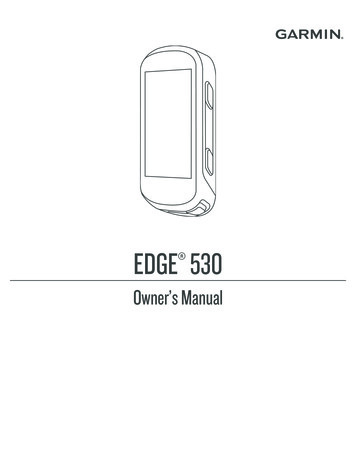
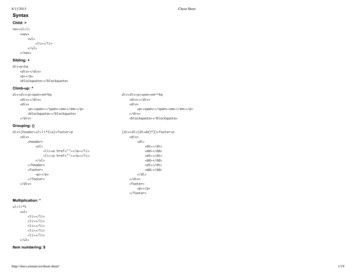
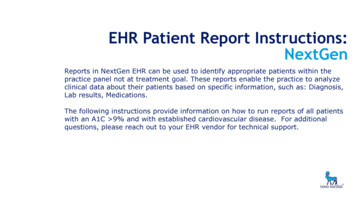
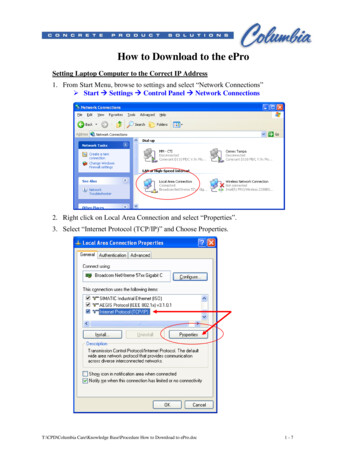
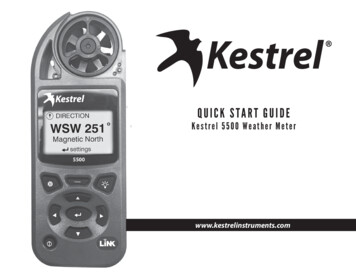
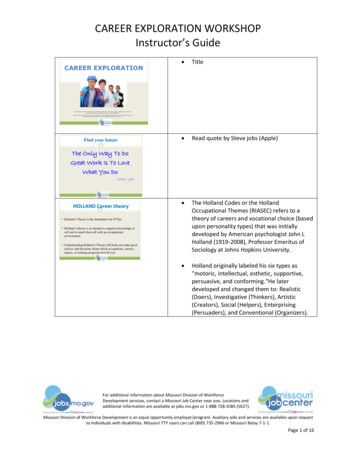
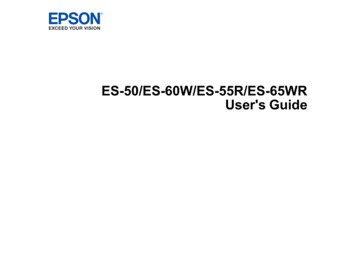

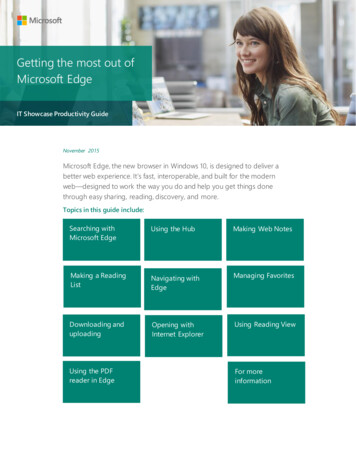

![Cisco Jabber CI-SSO for CI-ADFS [CI-ADFS] - Cisco](/img/21/sso-for-ci-adfs.jpg)